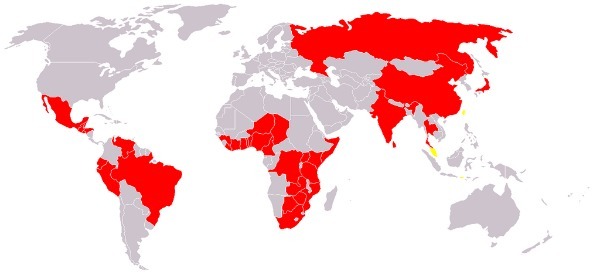Malnutrition is defined as a clinical condition resulting from a relative or absolute deficiency of one or more essential nutrients.
Malnutrition occurs when the body does not receive the necessary nutrients for its proper metabolism. It is a disease with multiple causes, complex to understand and rooted in poverty. It is a result of social, economic and pathological factors.
It is a serious public health problem around the world, being more observed in underdeveloped and developing countries.
Malnutrition can start in the uterus and extend into adulthood. Low birth weight babies who have suffered intrauterine growth retardation are already born malnourished and at risk of death.
Children are the most affected. THE child malnutrition it has serious consequences for the growth and development of children. Child malnutrition is directly related to the living conditions of low-income families. Malnutrition is responsible for 55% of deaths in children under five worldwide.
Learn more about Child mortality and Underdeveloped countries
Types of Malnutrition
Malnutrition can be classified according to the nutrient that is lacking in the diet.
- Kwashiorkor: Protein deficiency.
- doldrums: Calorie shortage.
- Kwashiorkor-marasmatic: Mixed form, there is a lack of energy sources and proteins.
Causes of Malnutrition
The causes of malnutrition can be primary or secondary:
- primary causes: Inadequate power. The person has a diet that is quantitatively or qualitatively insufficient in calories and nutrients.
- secondary causes: Some condition makes food intake not sufficient to meet the body's energy needs. It is associated with the presence of worms, cancer, anorexia, infections, food intolerance, poor digestion and absorption of nutrients.
Other factors can also cause malnutrition, they are: early weaning, lack of adequate sanitary conditions, social factors, cultural eating practices and emotional conditions.
Also read about the world hunger and hunger in Brazil.
Consequences of Malnutrition
Malnutrition causes several changes in the normal functioning of the body. The destitute person is more likely to suffer from infections and be affected by other diseases.
In children, malnutrition can compromise mental and physical development. In severe cases it can even lead to death.
Among the main consequences of malnutrition are:
- Loss of muscle mass and fat;
- slimming;
- Easy release of the hair;
- Hair color loss;
- Decreased or interrupted growth;
- Anemia;
- Wrinkling and peeling of the skin;
- Bone changes;
- Changes in organs of the respiratory, immune and digestive system;
- Psychological changes such as depression and apathy.
Malnutrition treatment
The treatment of malnutrition varies according to the severity of the disease.
In general, it involves the following actions: eliminating the causes of malnutrition and providing conditions in the time necessary for the body to recover.
The treatment seeks to recover the person's nutritional status, with the aim of normalizing their metabolism. For this, the necessary nutrients in the diet are provided.
In children, treatment also seeks to restore their normal growth and weight gain conditions.
THE healthy eating is the best way to prevent malnutrition.
Want to learn more about healthy eating? read about Food pyramid.
Malnutrition in Brazil
In Brazil, the prevalence of malnutrition in childhood has decreased in recent decades.
The highest rates of malnutrition in the country are in the Northeast and North regions. Which can be explained by the economic and social conditions in these regions.
The population of the Northeast is the one that suffers most from lack of hygiene, basic sanitation, adequate housing and income conditions. As malnutrition is related to social aspects, this explains the fact that this region is the most affected by malnutrition.
In Brazil, deaths related to malnutrition reach approximately 20%. The World Health Organization recommends that this value does not exceed 5%.
Read too:
- eating disorders
- Obesity


